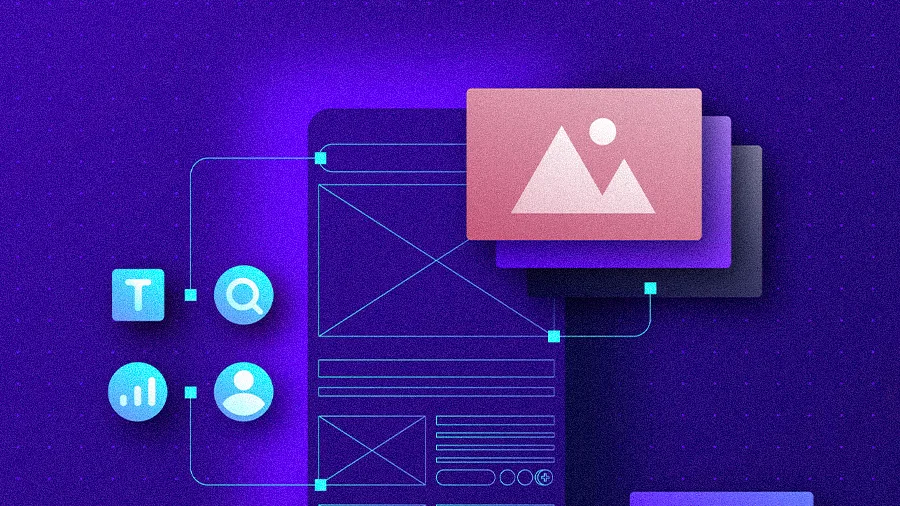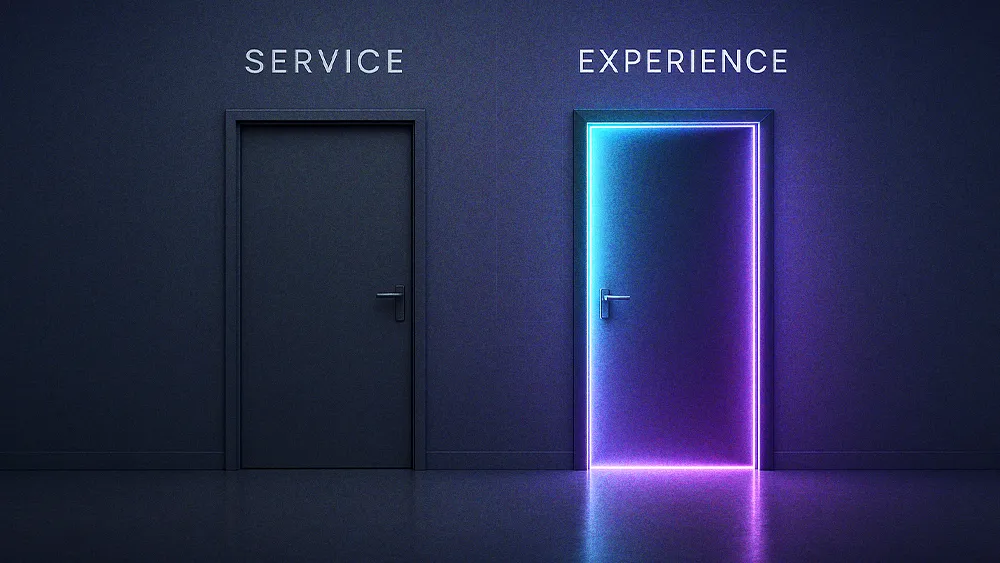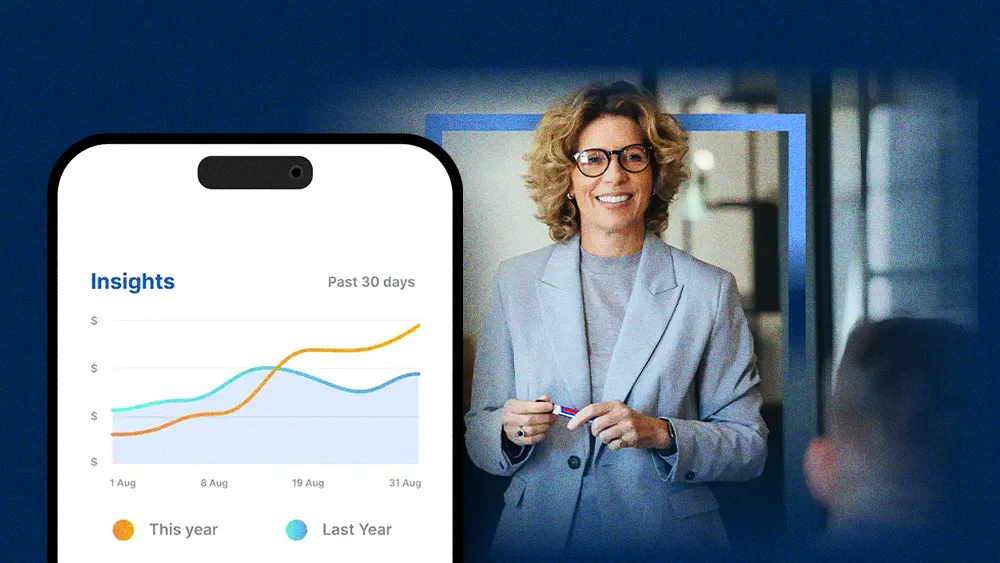
All articles
Walmart's Director of AI on Designing the Generational Leap from UX to Intelligent Entities
David Malouf, Director of UX Design for AI at Walmart, explains why user experience design is making a generational leap from creating static interfaces to intelligent personalities.

Key Points
User experience design is making a generational leap from creating static interfaces to shaping the personalities of intelligent AI entities.
David Malouf, Director of UX Design for AI at Walmart, explains why replacing usability with trust as the defining metric will be essential for successful AI interactions.
The solution for designers is to "AI-proof" their careers by focusing on human skills like character writing and managing the AI's data and conversational capabilities.
The future is now, it's just not evenly distributed. My challenge is to be forward-thinking about AI while recognizing that my coworkers and users are at a completely different place in their ability to understand or engage with it.
The rapid pace of AI development is creating a practical challenge for UX leaders. A vast gap is emerging between the technology’s cutting edge and the daily reality for employees and customers. Now, the difference is significant enough to warrant its own name: designing for agents.
For an expert's take, we spoke with David Malouf, Director of UX Design for AI, Platforms, and DesignOps at Walmart. His perspective is also shaped by senior leadership roles at enterprises like Teladoc Health, Northwestern Mutual, and Hewlett Packard Enterprise, and as the founder of the Interaction Design Association (IxDA). To frame his view, he opens with a famous quote from author William Gibson.
“'The future is now, it's just not evenly distributed.' My challenge is to be forward-thinking about AI while recognizing that my coworkers and users are at a completely different place in their ability to understand or engage with it,” Malouf says. Today, that uneven distribution is forcing a fundamental re-evaluation of user experience itself, he explains.
Entities, not experiences: For Malouf, the solution is a radical redefinition. Instead of static interfaces, designers must learn how to create intelligent, conversational agents. But architecting a personality is also a task that carries significant creative and ethical weight. “We're not designing experiences anymore. We're designing entities. We are designing a personality, a culture. And that's a completely different kind of design."
To underscore the magnitude of this change, Malouf compares it to another historic shift in the design field. “AI design is as different from software design as software design was from industrial design. It's a leap so significant that it requires its own name and a fundamentally different mindset.”
Conversation over interface: Instead of focusing on tasks, designers should embrace the messiness of human conversation, he explains. “A big piece of this new mindset is the shift from user interface to conversation. It's about so much more than just completing tasks.”
My thinking partner: The goal is to create a true collaborator, or a “thinking partner,” as Malouf calls it. Here, he shares a personal experience as an example. “I have a slide in my presentation called 'ChatGPT, my thinking partner.' To create the image, I asked the AI to generate a picture of my best friend and me in the style of a Ghibli animation. My AI 'partner' wore a shirt with 'Chatty,' my nickname for them, and it nailed the concept in four tries. As someone who can't draw, that's a creative vision I could never have realized on my own.”
In this new conversational paradigm, trust replaces usability as the defining measure of a successful AI. “When you're talking to something like this, trust is earned by accuracy and by tone,” he notes. But an entity must continuously earn that trust to be effective.
Context is king: "Effective tone" adapts to the user's specific circumstances, Malouf explains. “Tone isn't just about being friendly; it's about being appropriate to the context. In my work with back-office associates, the expectation is professionalism. But if I were designing for an employee working with customers on the store floor, the tone would need to be different, lighter, perhaps less pedantic.”
But how do you deliver that kind of tailored interaction at enterprise scale? The approach is operationalized through a "super agent" or "orchestrator" model, where a single AI interface is powered by thousands of specialized "child" AIs, with an orchestrator managing guardrails and routing queries.
The omniscient orchestrator: "The orchestrator understands who you are. When you ask a question, it interprets your intent and routes it to the correct group of agents to get the right answer." The system customizes everything down to the output format because “that knowledge about you is constantly changing,” Malouf explains.
For CX designers, Malouf’s advice is blunt: make yourself “AI-proof” by focusing on the uniquely human skills that AI cannot replicate. He suggests pivoting into new and adjacent roles, like the ethicist, who manages inherent cultural biases, or the character writer.
Designing a person: One of the best ways to become AI-proof is to specialize in crafting the very personalities it requires, Malouf says. “You might become more of a character writer, like people do for gaming. Since you're designing a personality, you have to ask: What is that character going to be? It may even have multiple personalities, so you'll need to define those distinct characters.”
The bot's-eye view: Another role involves developing a new kind of data literacy, focused on curating the AI's own knowledge. “Design is going to be more about managing data than ever before, and I don't mean user data. I mean data from the AI's perspective. The job becomes: How do you maintain its language and conversational capabilities? That work is done through data management and guardrails.”
Ultimately, Malouf ends with a dose of realism, acknowledging the transition will be gradual. Many companies will lag, meaning “there's still plenty of people who are going to be pushing pixels for a long time.” But even in a world where AI can generate ideas, the designer's core value remains intact, he concludes. “So it's good at generating ideas, but you have to generate the prompt to get to the right idea. Where does that prompt come from?"







